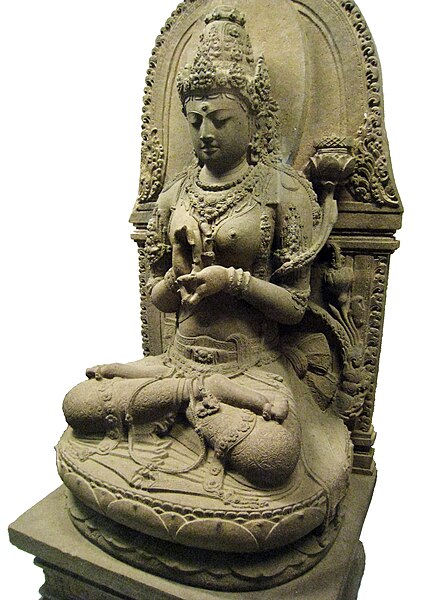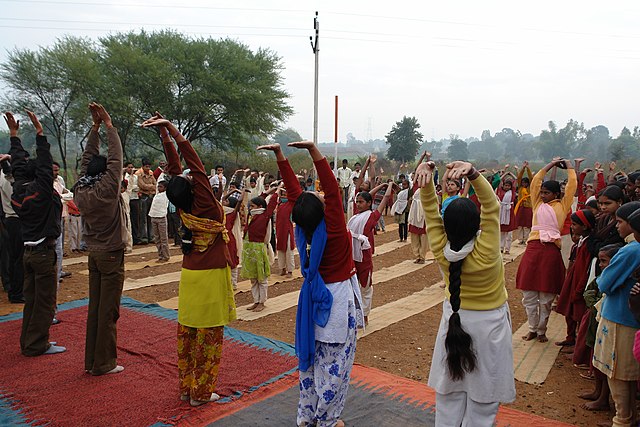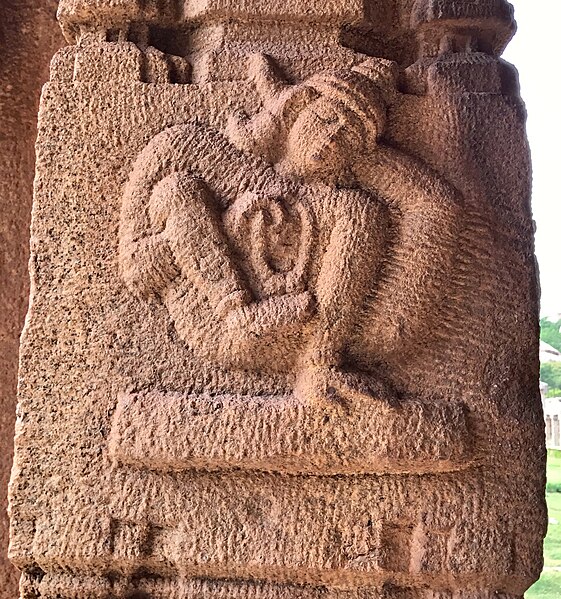The standing asanas are the yoga poses or asanas with one or both feet on the ground, and the body more or less upright. They are among the most distinctive features of modern yoga as exercise. Until the 20th century there were very few of these, the best example being Vrikshasana, Tree Pose. From the time of Krishnamacharya in Mysore, many standing poses have been created. Two major sources of these asanas have been identified: the exercise sequence Surya Namaskar ; and the gymnastics widely practised in India at the time, based on the prevailing physical culture.
The rock relief "Descent of the Ganges" at Mahabalipuram appears to show a person standing in Vrikshasana (tree pose) at top left. 7th century
Prajnaparamita seated in Padmasana for meditation, Java. 13th century
Downward Dog is one of the most widely-recognised asanas.
Surya Namaskar, the salute to the sun, was taught as exercise and not as yoga in the 1930s, before it was incorporated into modern yoga as exercise.
An āsana is a body posture, originally and still a general term for a sitting meditation pose, and later extended in hatha yoga and modern yoga as exercise, to any type of position, adding reclining, standing, inverted, twisting, and balancing poses. The Yoga Sutras of Patanjali define "asana" as "[a position that] is steady and comfortable". Patanjali mentions the ability to sit for extended periods as one of the eight limbs of his system. Asanas are also called yoga poses or yoga postures in English.
Asanas in varied contexts. Left to right, top to bottom: Eka Pada Chakrasana; Ardha Matsyendrasana; Padmasana; Navasana; Pincha Mayurasana; Dhanurasana; Natarajasana; Vrkshasana; Yashtikasana
Mould of Pashupati seal from the Indus Valley civilization, c. 2500 BC, its central figure in a pose resembling Mulabandhasana.
A page from Patanjali's Yoga Sutras and Bhasya commentary (c. 2nd to 4th century CE), which placed asana as one of the eight limbs of classical yoga
Relief statue in Achyutaraya temple, Hampi, Karnataka showing an unidentified hand-balancing asana, 16th century








